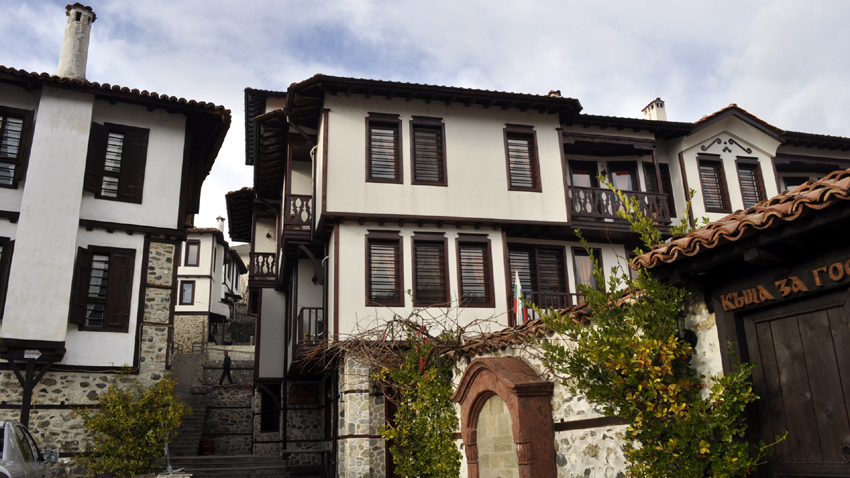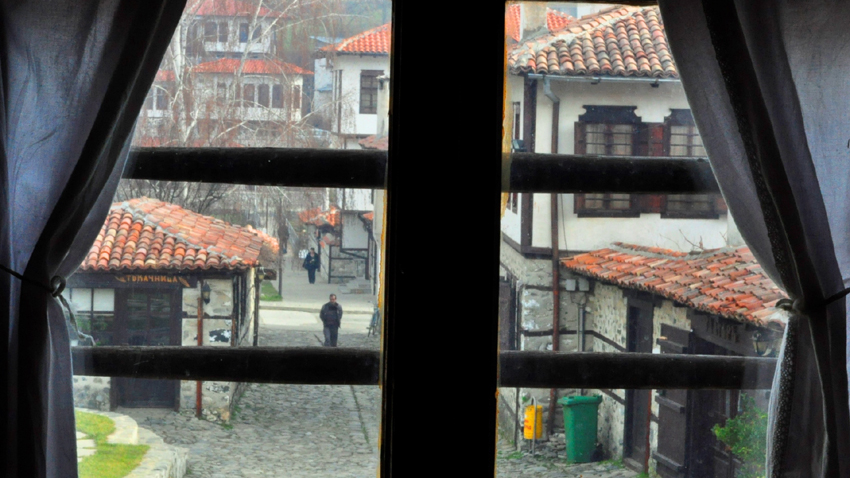Zlatograd has always been “the gateway to the wide world”. People here say this is where Bulgaria begins, and with good reason. A gentle breeze from the Aegean Sea reaches this small town on the country’s border with Greece. Through the ages Zlatograd has brought different cultures together and they have all left their imprint on local customs and lifestyle. Nowadays this beautiful part of the Rhodope Mountain enthralls travelers with its white houses with round chimneys and its Revival style atmosphere.
Zlatograd is where the first post office in Bulgaria was built. The oldest church in the Rhodopes, built in 1834, the times of Ottoman domination rises in the centre of the town’s historical part; the first monastery school in the entire region is also here, in Zlatograd. It was here again that at the time of the National Revival the first European innovations in technology and agriculture were applied. In the 19th century the people of Zlatograd were the first to leave their folk costumes behind and start wearing elegant city clothes, following European fashion to the minutest of details.

In our day Zlatograd is once again a pioneer – this time of entrepreneurship and vision. Thanks to the initiative of a local businessman, at the turn of the 21st century the town’s old marketplace was born to a new life. Investing his own resources and with financing from European funds, the dilapidated old houses were restored and traditional craft workshops opened doors in their basements. That was how the only private so-called habitat ethnographic complex in the country came into being. The town, until then sunk in oblivion suddenly filled with tourists:
“In 2001 we had but one hotel that could put up 10 tourists and almost no visitors. Now we have many hotels and guest houses and almost 90,000 visitors to the town every year,” says Alexander Mitoushev, the entrepreneur who undertook to renovate the complex and make the town a tourist attraction.

The town was once called Belovidovo, the name being derived from the dazzling whiteness of its houses, perched on the rocky cliffs of the Rhodopes. If you take a stroll in the streets of its old part you will see it has lost none of its old-time charm. And the first thing that visitors notice are the rounded white chimneys. They invariably top the red tiled roofs; in winter a silvery strand of smoke rises up to the sky. Most of the houses here are more than 200 years old, they are made of stone, wood and adobe and some are still inhabited. Others have been turned into small hotels. Still others have workshops in their basements where latter-day master craftsmen bring to life the crafts of old, typical of this part of Bulgaria. Visitors can take a peek into the woodcarving, pottery, cutlery or coppersmith workshops. If you drop by the local goldsmith you will see how belt-buckles, necklaces, bracelets are made using ancient technologies. In the weaving workshop visitors can see how the typical Rhodope fleecy rugs are made, and try out the loom; at the saddlemaker’s – how horse and donkey saddles, horse-collars and bridles are made. Some of the first sowing-machines imported in Bulgaria 150 years ago are on display at the tailor’s where you can buy hand-made shirts, aprons or even entire Rhodope folk costumes. “We are always on the lookout for old folk costumes and we learn the trade from them,” says Marina Teritova, a master craftsman of braiding.

“The typical Bulgarian braiding is applied instead of seams in clothing and also serves as decoration", Marina Teritova goes on to say. "The more braids a folk costume had, the wealthier its owner. Nowadays it is not easy to buy whole costumes with braiding, so we also make braid souvenirs. Like these flowers or these butterflies here, used as brooches or head ornaments.”

If you take a walk in the ethnographic complex, enjoying the view of the magnificent Rhodope architecture you simply must pay a visit to the Old café, dating back to 1823. Since then, right down to our day, it offers a typical local specialty – coffee on sand. At the local taverns and restaurants guests can try delicious and healthy Rhodope dishes. While accommodation in the town and its environs is ample. Nonetheless, if you plan a visit in summer, you would be wise to book in advance, as in that season it is difficult to find vacancies. The same is true of the folklore festivals held regularly at Zlatograd’s ethnographic complex. At festival time hundreds of locals, dressed in folk costumes as well as tourists, cameras in hand, stream in the town’s narrow streets. Whether it is the Festival of Wine or of old-time city songs, a re-enactment of the Butterfly – an ancient rain ritual of the Balkan peoples – or the popular traditional barbecue, any celebration here lifts the spirits and invariably ends in a chain dance in the town square.
Photos: Veneta Nikolova
English version: Milena Daynova
This article is issued with the support of the project of Smolyan District Administration under the Programme for European territorial cooperation "Greece - Bulgaria 2007-2013"
In its centuries-old history, the Etropole Monastery "Holy Trinity", also called "Varovitets", has been preserving valuable pages decorated by skilled artists. Here hundreds of years ago, one of the most productive literary schools in Bulgarian..
Cape Kaliakra is one of the most picturesque places along Bulgaria’s Black Sea coast. The narrow rocky peninsula cuts 2 kilometers through the sea. Its steep slopes are 60-70 meters high. The waves have cut deep niches and caves..
As a result of glacial erosion during the Quaternary era, clusters of lakes were formed in the higher reaches of Rila Mountain, an essential element of the landscape. The string of the seven lakes of Rila is the longest, most scenic and most..

+359 2 9336 661
